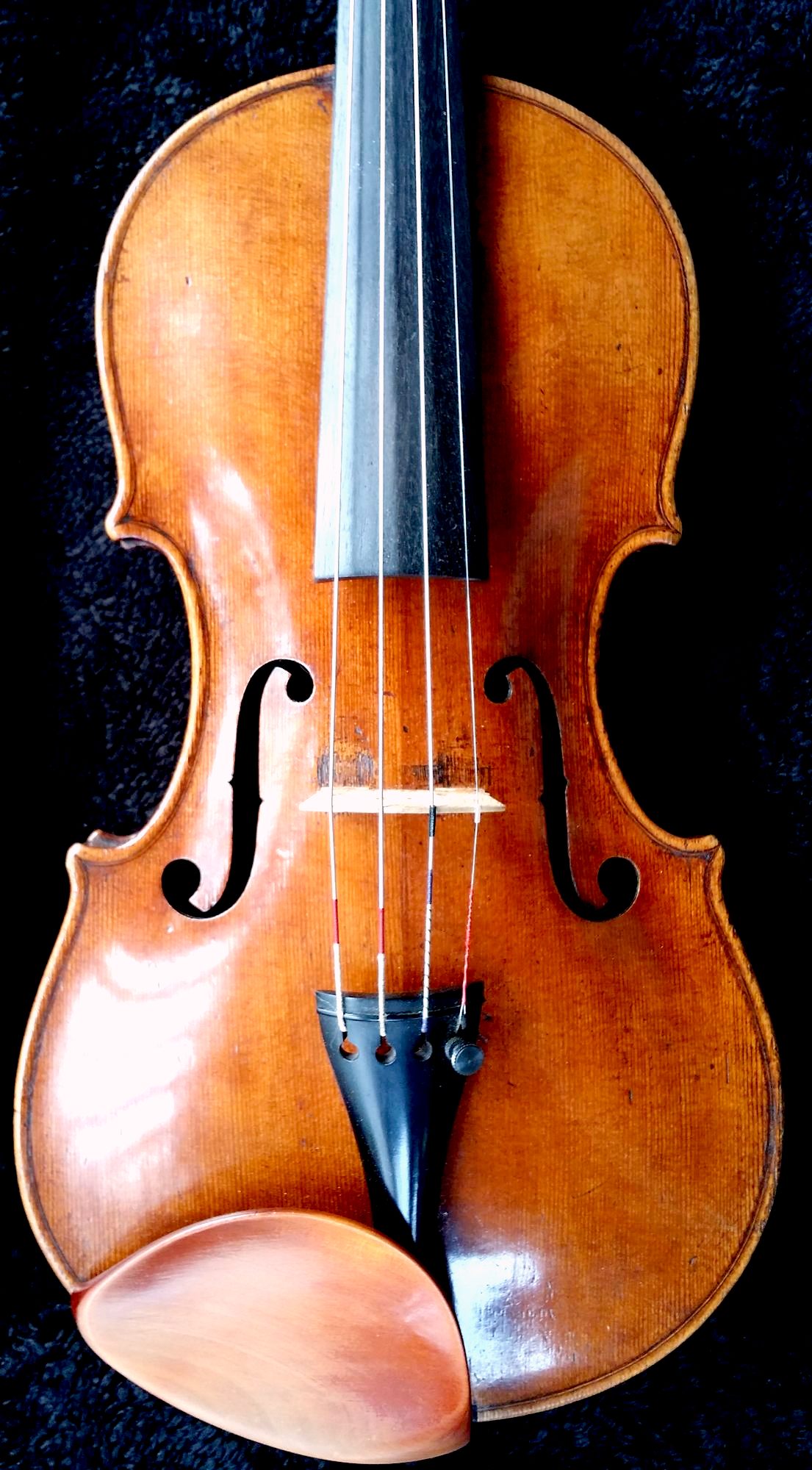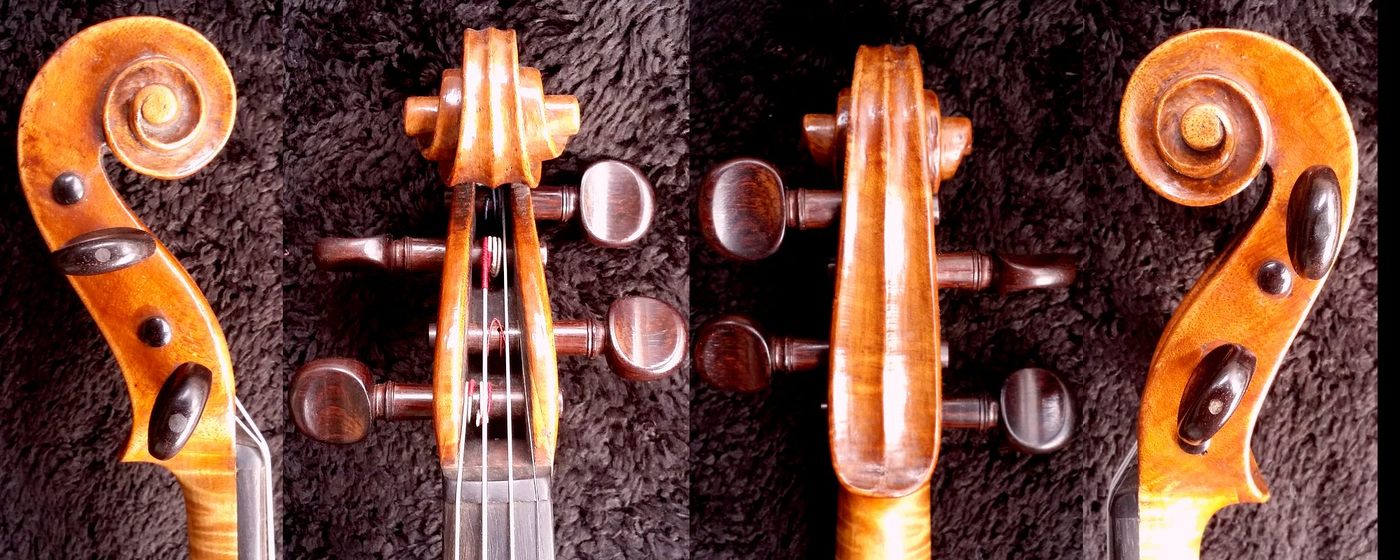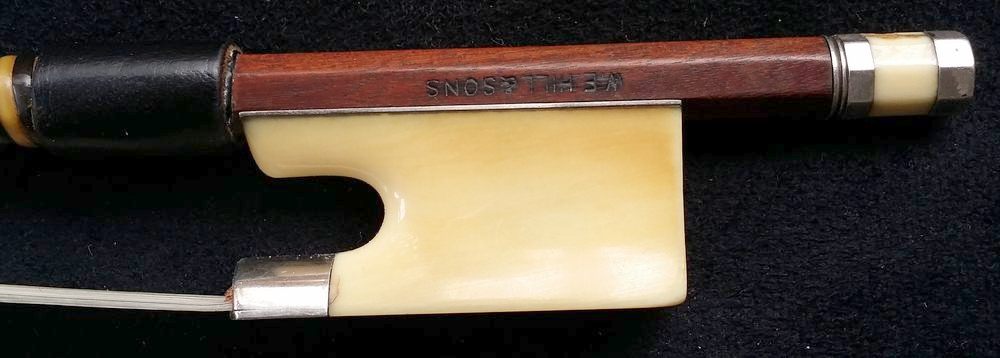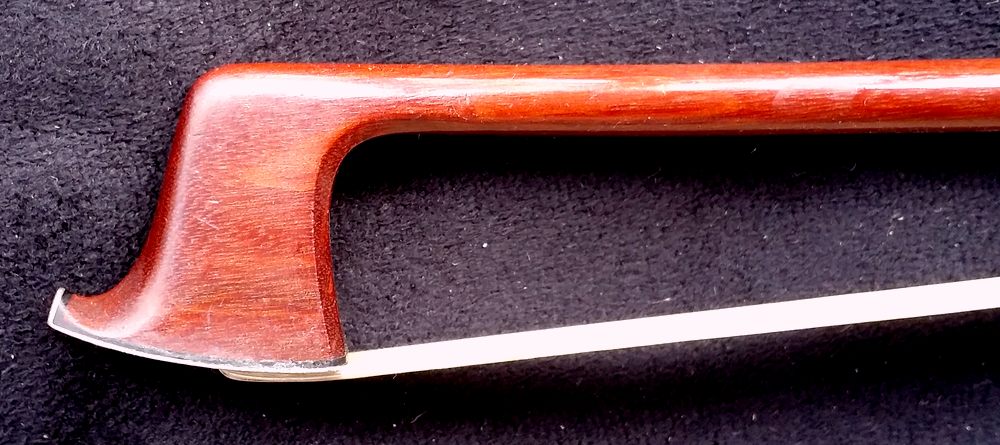|
This violin and bow are no longer available. This violin bears a label stating that it was made by Joannes Chiaravalle of Falerii, Italy. It carries certificates from the famous Hill shop, who authenticated it in 1966, and from the shop Restall & Boyle of Portsmouth who appraised it in 1992. Unfortunately as is often the case with older instruments, the original label was removed and a false one inserted at some time. The actual maker has now been established by the experts at Brompton's as being Francesco Maurizi of the Ascoli district about midway on the Adriatic coast of Italy, around 1850. The condition of the wood throughout the violin is excellent, with no serious injuries apparent and certainly no significant restoration work inside. The neck was at some point grafted to meet modern playing requirements, but otherwise the structure is much as the maker left it. The tone of this violin is generous and warm, carrying well in large rooms and small, something of a testament to the taste of its late owner who was known during the 1950's and 60's as both soloist and orchestral musician. The wood chosen by Maurizi for the back and ribs is extraordinary, wildly curving flames and annular rings making for diverse patterns which vary in differing lighting. Somehow, contrary to the vast majority of instruments made from such woods, this violin has remained almost un-distorted by seasonal movement and great antiquity. |

|

|

|

|

| This violin was sold for the owner at auction by Brompton's Fine & Rare Instruments of London in their October 23, 2017 auction. |
| With the violin was a Hill bow made by William Grieve Johnston between 1900 and 1904. Clear, straight grained pernambuco, finely crafted to render a light, responsive bow weighing 58 grams. Fittings are silver, but with ivory frog and adjuster, and whale baleen used for the lapping. The bow plays easily, with good responsiveness and strength for so low a weight. Total length is 29.25 inches and point of balance is at 10 inches. Considering the C.I.T.E.S. regulations on international transit in materials from endangered species, the ivory elements bring up potential problems for a travelling violinist. While the antiquity of this bow is assured by easily researched elements of its manufacture (for anyone with knowledge in the field at least), customs agents are seldom significantly interested in such niceties. Proper documentation certifying the bow as being exempted may help but I would advise caution in travel as confiscation is a real risk in the current climate. I've been told by a friend in a position to know such things that the Musicians' Union is working currently in negotiations with authorities to create exemptions for travelling musicians with valuable antiques. Such changes are still however on the drawing board at this date. This bow has found a new player in late 2023. |

|

|

|